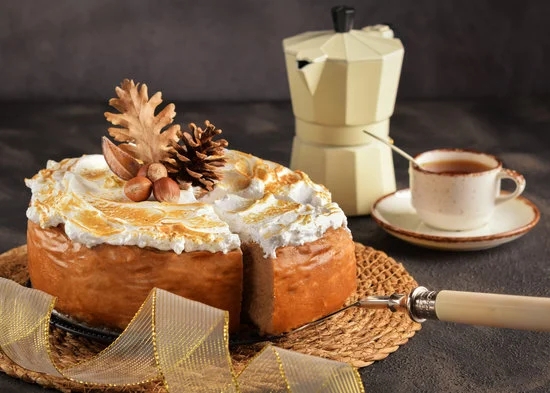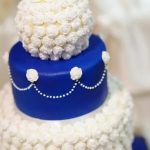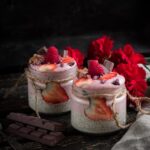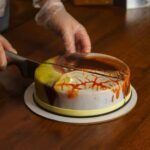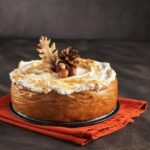Have you ever wondered how to make whipped frosting for cake decorating? Whipped frosting is a versatile and delicious option for adding a light and airy finish to your cakes. Whether you’re looking to create intricate designs or simply want to add a touch of sweetness, whipped frosting can elevate any dessert.
Whipped frosting is preferred by many bakers and decorators for its smooth consistency and easy spreadability. It provides a perfect canvas for decorations and can hold its shape well, making it ideal for piping intricate designs. Using whipped frosting adds an extra element of elegance to your cakes, making them not only visually appealing but also incredibly delicious.
To make whipped frosting, you’ll need just a few simple ingredients that are likely already in your pantry. With the right combination of ingredients and proper techniques, you’ll be able to achieve that perfect fluffy texture that will take your cake decorating skills to the next level.
In the following sections, we will guide you through the step-by-step process of making whipped frosting, sharing tips on how to get the ideal consistency and customizing the flavor to suit your preferences.
The Importance of Using Whipped Frosting for Cake Decorating
Enhanced Texture and Fluffiness
Using whipped frosting for cake decorating is important because it provides a light and airy texture to the cakes. The whipped consistency allows for easy spreading, piping, and shaping on the cake surface. This type of frosting creates a smooth finish that is perfect for intricate designs and decorations. The fluffiness of whipped frosting also adds an extra element of delight to every bite of the cake.
Improved Stability
Whipped frosting offers better stability compared to other types of frostings, making it ideal for creating multi-tiered cakes or cakes with elaborate decorations. The structure of whipped frosting holds up well under different temperature conditions, preventing melting or sliding off the cake. This is especially important for special occasions where the cake needs to maintain its shape and appearance throughout the event.
Versatility in Decorating
One of the key advantages of using whipped frosting for cake decorating is its versatility. Whipped frosting can be easily colored using food coloring gels to create vibrant hues for decorating cakes. It also serves as a base for adding various flavors such as chocolate, strawberry, or citrus to cater to different tastes. With whipped frosting, decorators have the freedom to unleash their creativity and design custom cakes that suit any celebration or theme.
Ingredients Needed for Whipped Frosting
Whipped Frosting Ingredients
When it comes to making whipped frosting for cake decorating, the ingredients you use can make all the difference in the final product. A basic whipped frosting recipe typically requires simple and accessible ingredients such as butter, powdered sugar, vanilla extract, and heavy cream. These ingredients work together to create a light, fluffy, and creamy frosting that is perfect for decorating cakes.
Specialty Ingredients for Flavored Whipped Frosting
For those looking to add a unique twist to their whipped frosting, there are endless possibilities when it comes to flavor variations. Some specialty ingredients that can take your whipped frosting to the next level include flavored extracts (such as almond or lemon), citrus zest (like orange or lime), cocoa powder for chocolate-flavored frosting, or even fruit purees for a burst of fruity goodness.
Experimenting with different flavors can help you customize your whipped frosting to suit any cake you are decorating.
Quality of Ingredients Matters
When making whipped frosting for cake decorating, it is important to pay attention to the quality of the ingredients you are using. Using high-quality butter will result in a smoother and creamier texture, while opting for fresh heavy cream will ensure a better consistency when whipping.
Additionally, choosing pure vanilla extract over artificial extracts can enhance the flavor profile of your whipped frosting. Remember that using top-notch ingredients will ultimately elevate the overall taste and appearance of your cake decorations.
Step-by-Step Instructions on How to Make Whipped Frosting
Whipped frosting is a light and fluffy topping that is perfect for cake decorating. Learning how to make whipped frosting for cake decorating can take your baked creations to the next level. It adds a delicious finish to any cake and allows for easy piping and decorating. With just a few simple ingredients and some patience, you can create a beautiful and delicious whipped frosting for your cakes.
To make whipped frosting for cake decorating, you will need the following ingredients: heavy whipping cream, powdered sugar, and vanilla extract. The heavy whipping cream will give the frosting its light and airy texture, while the powdered sugar adds sweetness and helps stabilize the mixture. Vanilla extract provides a subtle flavor that complements most cake flavors well. Additionally, you can add food coloring or other extracts to customize the color and flavor of your whipped frosting.
Here is a step-by-step guide on how to make whipped frosting for cake decorating:
- In a chilled mixing bowl, combine the heavy whipping cream, powdered sugar, and vanilla extract.
- Using an electric mixer, beat the mixture on high speed until stiff peaks form.
- Be careful not to overbeat the frosting, as it can become too stiff and difficult to pipe.
- Once your whipped frosting is at the desired consistency, it is ready to use for decorating your cakes.
Tips and Tricks for Getting the Perfect Consistency
When it comes to cake decorating, one of the key factors to consider is achieving the perfect consistency for your whipped frosting. The consistency of your frosting can greatly impact the outcome of your cake design, so it’s important to get it just right. Here are some tips and tricks to help you achieve that ideal consistency:
- Start with softened ingredients: To ensure a smooth and creamy whipped frosting, make sure your butter and cream cheese are at room temperature before starting. This will help prevent lumps and create a smoother texture.
- Gradually add powdered sugar: When incorporating powdered sugar into your whipped frosting, do so gradually. This will help prevent clumps from forming and allow you to better control the thickness of your frosting.
- Adjust consistency with liquid: If your whipped frosting is too thick, you can add a small amount of milk or cream to thin it out. On the other hand, if it’s too thin, you can add more powdered sugar to thicken it up.
Different Ways to Customize the Flavor of Whipped Frosting
Aside from achieving the perfect consistency for your whipped frosting, another fun aspect of cake decorating is customizing the flavor of your frosting. Here are some ways you can add a unique twist to your whipped frosting:
- Extracts: Experiment with different extracts such as vanilla, almond, peppermint, or lemon to infuse different flavors into your whipped frosting.
- Fruit Purees: Incorporate fruit purees like raspberry, strawberry, or mango into your whipped frosting for a fruity twist.
- Citrus Zest: Grate citrus zest such as lemon or orange into your whipped frosting for a refreshing and tangy flavor profile.
By experimenting with different flavors and ingredients in your whipped frosting, you can create a truly personalized and delicious cake decorating experience.
Different Ways to Customize the Flavor of Whipped Frosting
Whipped frosting is a versatile and delicious option for cake decorating, offering a light and airy texture that enhances the overall look and taste of your baked creations. One of the best things about whipped frosting is the ability to customize its flavor to suit any preference or theme. Whether you want a classic vanilla taste or something more unique like mocha or citrus, there are several ways to achieve the perfect flavor profile for your whipped frosting.
One simple way to customize the flavor of whipped frosting is by adding extracts or flavorings. Vanilla extract is a popular choice, but you can also experiment with almond, mint, lemon, or any other extract that complements your cake flavors. For a richer taste, consider using flavored oils like orange or coconut. Remember to add these flavorings gradually and taste as you go to ensure you achieve the desired intensity without overpowering the frosting.
Another fun way to enhance the flavor of whipped frosting is by incorporating mix-ins such as crushed cookies, candy pieces, fruit purees, or chocolate chips. These additions not only add an extra burst of flavor but also create interesting textures that can take your cake decorating to the next level.
Just be sure to fold these mix-ins gently into the whipped frosting to maintain its light and fluffy consistency. Experiment with different combinations until you find one that perfectly complements your cake design and satisfies your taste buds.
| Ways to Customize Flavor | Description |
|---|---|
| Extracts/Flavorings | Add vanilla, almond, mint, lemon extracts or flavored oils like orange or coconut gradually for desired intensity. |
| Mix-Ins | Incorporate crushed cookies, candy pieces, fruit purees or chocolate chips into whipped frosting for added flavor and texture. |
Techniques for Decorating Cakes With Whipped Frosting
Decorating cakes with whipped frosting can be a fun and creative process that adds a beautiful touch to any baked creation. Whether you’re a beginner or an experienced baker, there are many techniques you can use to make your cake look stunning. Here are some ways you can decorate cakes with whipped frosting:
- Piping: Using a piping bag and various tips, you can create intricate designs on your cake. From borders to flowers to writing messages, piping allows you to showcase your artistic skills.
- Rosettes and Swirls: Swirling whipped frosting on top of the cake in a circular motion creates elegant rosettes. This simple yet effective technique adds a touch of sophistication to the appearance of your cake.
- Ombre Effect: Gradually changing the color of the whipped frosting from dark to light or vice versa creates a stunning ombre effect on your cake. You can achieve this look by using gel food coloring and blending it into the frosting.
To achieve these decorative techniques successfully, it is essential to ensure that your whipped frosting has the right consistency. The key lies in properly whipping the cream and incorporating air into the mixture without overbeating it. Additionally, using chilled equipment and working in a cool environment can help maintain the stability of the whipped frosting while decorating.
Troubleshooting Tip
If you find that your whipped frosting is too runny for decorating, try adding more powdered sugar gradually until you reach the desired stiffness. On the other hand, if your frosting is too stiff to pipe or spread smoothly, try incorporating a small amount of milk or cream to loosen it up.
By mastering these decorating techniques and troubleshooting tips, you can create beautifully decorated cakes with whipped frosting that will impress your friends and family at any gathering or celebration. Experiment with different designs and flavors to unleash your creativity and make each cake unique and unforgettable.
Troubleshooting Common Issues When Making Whipped Frosting
When making whipped frosting for cake decorating, it is essential to pay attention to the common issues that may arise during the process. One of the most common problems that bakers encounter when making whipped frosting is the frosting becoming too runny or not holding its shape. This can be caused by using ingredients that are too warm, overmixing the frosting, or not using enough stabilizers such as powdered sugar or cornstarch.
To prevent your whipped frosting from becoming runny, make sure all your ingredients are chilled before use. This includes your mixing bowl, whisk attachment, and even the cream itself. Keeping everything cold will help the cream whip up faster and hold its shape better. Another tip is to add stabilizers gradually while you beat the cream to avoid overmixing and deflating the air that gives whipped frosting its light and fluffy texture.
Another common issue when making whipped frosting is it becoming grainy or curdled in appearance. This can happen if you overbeat the cream or if you add ingredients at the wrong temperature. To salvage grainy or curdled frosting, try gently folding in a little bit of cold heavy cream or melted butter until it smooths out.
Be careful not to overmix once you’ve added these additional ingredients as it might cause more issues with consistency. Remember, practice makes perfect when it comes to achieving that velvety smooth texture for your whipped frosting.
Conclusion
In conclusion, learning how to make whipped frosting for cake decorating can truly elevate your baking skills and take your creations to the next level. Whipped frosting provides a light and airy texture that pairs perfectly with cakes, cupcakes, and other baked goods. By using fresh ingredients and following the step-by-step instructions provided, you can easily create a delicious and visually appealing frosting that will impress your friends and family.
One of the key advantages of whipped frosting is its versatility when it comes to customization. From adding different extracts and flavorings to experimenting with various food colorings, there are endless ways to personalize your whipped frosting to suit any occasion or taste preference. Whether you prefer classic vanilla or want to try something more adventurous like mocha or coconut, whipped frosting can be easily adapted to suit your preferences.
When it comes to decorating cakes with whipped frosting, the possibilities are endless. Whether you prefer simple swirls and rosettes or intricate designs using piping tips and tools, whipped frosting provides a smooth canvas for creativity.
By incorporating techniques such as ombre coloring, textured finishes, and even edible decorations like sprinkles or fondant accents, you can showcase your artistic flair and create stunning desserts that are sure to wow your guests. Mastering the art of making whipped frosting opens up a world of possibilities for creating beautiful and delicious baked creations.
Frequently Asked Questions
What Is Whipped Cake Frosting Made Of?
Whipped cake frosting is typically made of ingredients such as powdered sugar, butter, vanilla extract, and heavy cream. The butter adds richness and stability while the heavy cream provides the light and airy texture when whipped.
Is Whipped Icing Good for Decorating Cakes?
Whipped icing can be great for decorating cakes because of its light and fluffy texture which makes it easy to spread or pipe onto cakes. It holds its shape well, making it ideal for creating intricate designs or decorations on cakes.
How Do You Stiffen Whipped Cream for Piping?
To stiffen whipped cream for piping, it is essential to ensure that the heavy cream being used has a high fat content (at least 36% fat). Additionally, chilling the mixing bowl and beaters beforehand can help stabilize the cream. Overwhipping can also result in stiffened whipped cream suitable for piping.

Welcome to our cake decorating blog! My name is Destiny Flores, and I am the proud owner of a cake decorating business named Cake Karma. Our mission is to provide delicious, beautiful cakes for all occasions. We specialize in creating custom cakes that are tailored specifically to each customer’s individual needs and tastes.

